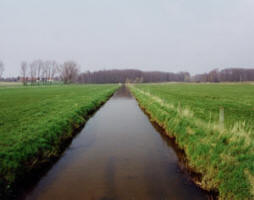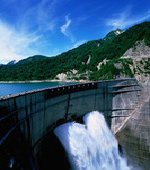 Single artificial wetland successfully treats different types of wastewater
Single artificial wetland successfully treats different types of wastewater
The world's first full-scale artificial wetland designed to treat both sewage effluent and mine wastewater has been found to continuously remove high levels of pollutants, a recent study concludes. Treating both types of wastewater at the same time proved to be highly beneficial because they contain pollutants which are more easily removed when mixed together.
Wetlands contain plants and wildlife that are adapted to the local physical, chemical and biological conditions, and can remove a wide range of pollutants from water, such as metals, fertilisers and pesticides. Artificial wetlands are now a well-established wastewater treatment method in a wide range of industries. For example, they have been a common part of the sewage treatment process since the mid-20th century. More recently, the mining industry has begun creating wetlands to treat drainage water.
Historically, wetlands have been used to treat water from a single source, focusing on distinct sets of pollutants. In this study, the researchers assessed the first full-scale wetland co-treatment site, in Gateshead, UK, which processes wastewater from both partially treated sewage and mine water.
To study the removal of pollutants from the water, the researchers took samples as part of regulatory monitoring roughly every two weeks between April 2007 and March 2011, from wastewater inflow and wetland outflow sites.
Levels of pollutants such as total and dissolved phosphorus, iron, ammonium, and biologically degradable material (quantified as Biological Oxygen Demand) were measured in the samples. General water quality indicators, such as suspended solids, were also measured. The researchers compared the observed removal rates with those that would have been explained only by the two wastewaters diluting one another.
Levels of pollutants in the water at wetland outflow sites were much lower than those expected if dilution alone was taking place. For example, iron was reduced by 89%, ammonium by 66% and suspended solids by 66%. These high rates of removal were also sustained over the study period, the researchers found.
Mine waste water typically contains iron, which reacts vigorously with phosphorus present in the sewage. This reaction forms insoluble compounds which are naturally removed from the water in the wetland environment. Co-treatment wetlands may therefore be especially useful when wastewater sources are located reasonably close to each other – which is often the case in the old coalfields of Europe, where abandoned mines occur close to large towns that were established in the mining era.
The researchers concluded that, where practical, co-treatment of sewage and mine water in wetlands is beneficial. As well as increased efficiency there are possible economic benefits of using a single wetland facility for multiple sources and large wetlands such as this also provide important wildlife habitat.
However, achieving these benefits would need cooperation and coordination of separate organisations, such as mine-pump operators and sewage-plant managers. Therefore co-treatment wetlands may benefit from, or even need, coordination by a third party, such as policymakers or environmental regulatory agencies.
| Contact information |
Email: paul.younger@glasgow.ac.uk |
|---|---|
| News type | Inbrief |
| File link | n/a |
| Source of information | Younger, P. L. & Henderson, R. (2014). Synergistic wetland treatment of sewage and mine water: pollutant removal performance of the first full-scale system. Water Research, 55: 74–82. DOI:10.1016/j.watres.2014.02.024 |
| Keyword(s) | wastewater, wetlands, Chemicals, Environmental technologies, Green infrastructure, Waste |
| Subject(s) | ANALYSIS AND TESTS , CHARACTERISTICAL PARAMETERS OF WATERS AND SLUDGES , DRINKING WATER , DRINKING WATER AND SANITATION : COMMON PROCESSES OF PURIFICATION AND TREATMENT , HEALTH - HYGIENE - PATHOGENIC MICROORGANISM , MEASUREMENTS AND INSTRUMENTATION , PREVENTION AND NUISANCES POLLUTION , RISKS AND CLIMATOLOGY , SANITATION -STRICT PURIFICATION PROCESSES , WATER QUALITY |
| Geographical coverage | n/a |
| News date | 05/06/2014 |
| Working language(s) | ENGLISH |
 you are not logged in
you are not logged in





